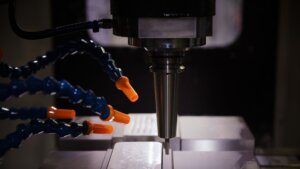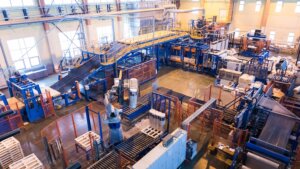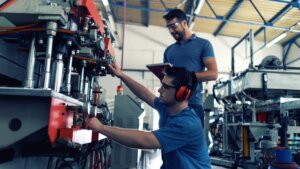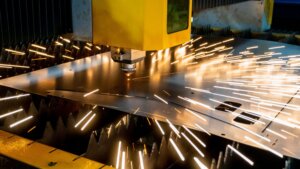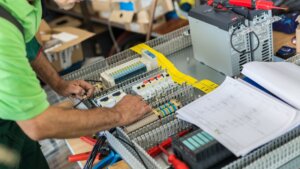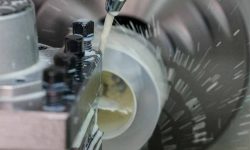In today’s fast-paced and increasingly customized world, low volume manufacturing stands as a beacon of flexibility and innovation.
This manufacturing approach, unlike its high-volume counterpart, allows businesses to produce smaller quantities of products, catering to specific market demands and niches.
In this extensive exploration, we’ll dive deep into what low volume production is, its significance, various methods, and the critical role it plays across numerous industries.
What is Low Volume Manufacturing?
Low volume manufacturing refers to the process of producing a limited number of components or products, typically ranging from a few units to several thousand. This manufacturing method is ideal for small batches, prototypes, and customized products.
The approach contrasts with high volume production, where economies of scale are leveraged to produce large quantities of identical items.
Why is Low Volume Manufacturing Important?
In the realm of modern manufacturing, low volume production stands out for its unique advantages, particularly in its flexibility and responsiveness to market demands. Here are some key reasons why low volume manufacturing is increasingly becoming a crucial part of the manufacturing landscape:
- Customization and Niche Markets: Low volume manufacturing is ideal for producing custom products or catering to niche markets. By producing smaller quantities, manufacturers can tailor products to specific customer needs or market segments without the substantial financial risk associated with large-scale production.
- Reduced Initial Investment and Tooling Costs: Unlike high volume production, low volume manufacturing often requires less upfront investment in tooling and setup. This cost efficiency makes it a viable option for startups and small businesses looking to bring new products to market quickly and affordably.
- Faster Market Penetration: With low volume production, you can move from the design phase to the market faster. This accelerated pace is vital in industries where trends and customer preferences change rapidly.
- Risk Mitigation in Product Launches: Launching new products involves inherent risks, especially in terms of market reception. Low volume manufacturing allows you to test the waters with a smaller batch of products, reducing the potential financial impact if the product doesn’t perform as expected.
- Support for Emerging Technologies and Materials: As new technologies like 3D printing and CNC machining evolve, they open up possibilities for innovative materials and designs. Low volume manufacturing methods are well-suited to these technologies, allowing for experimentation and adoption of cutting-edge materials like carbon fiber.
- Sustainability and Reduced Waste: Producing in smaller quantities can lead to a more sustainable manufacturing process with less material waste. This aspect is increasingly important in a world where environmental consciousness is rising.
What is the difference between high volume and low volume manufacturing?
The contrast between high volume and low volume manufacturing is stark, primarily revolving around the scale of production and the flexibility each offers.
High volume manufacturing, synonymous with mass production, focuses on producing large quantities of identical products.
This approach benefits from economies of scale but often lacks the flexibility to adapt quickly to market changes or customer-specific needs.
What is the minimum level of production?
Determining the minimum level of production for low volume manufacturing can vary depending on the industry, the product, and the manufacturing methods used.
Generally, low volume production might range from a few units to several thousand. The key is that these quantities are significantly lower than those of high volume production, which can run into the millions.
The choice of low volume manufacturing hinges on factors like the demand for the product, the cost-effectiveness of producing small quantities, and the need for customization or rapid market response.
What are the Key Benefits of Low Volume Manufacturing?
Low volume production methods offer a suite of advantages that are particularly beneficial in today’s fast-paced and innovation-driven market. Let’s explore these benefits in detail:
- Reduced Initial Costs: One of the most significant advantages of low volume manufacturing is the reduced initial costs. The need for expensive tooling and setup is minimized, making it a cost-effective choice for startups and established companies alike. This reduction in upfront investment is particularly beneficial for you if you’re testing a new market or launching a novel product.
- Flexibility in Design and Production: Low volume manufacturing methods, including CNC machining and additive manufacturing, offer unparalleled flexibility in design and production. This flexibility allows for easy modifications and adaptations, enabling you to respond quickly to changing market trends or customer feedback.
- Faster Time-to-Market: With any low volume manufacturing method, the time from concept to market is significantly shorter. This expedited process is crucial for staying competitive, especially in industries where speed to market is a key factor for success.
- Ideal for Customization and Niche Markets: Low volume production is perfectly suited for customization and catering to niche markets. Whether it’s producing small batches of custom products or meeting specific requirements of a targeted market segment, low volume manufacturing allows for a personalized approach that large-scale production often cannot provide.
- Reduced Inventory Costs and Space: By producing in smaller quantities, you can significantly reduce inventory costs and the space required for storage. This aspect is particularly advantageous for businesses with limited storage facilities or those looking to minimize capital tied up in unsold inventory.
- Risk Mitigation: Launching a new product always carries risks. Low volume manufacturing mitigates these risks by allowing for smaller production runs. This approach enables you to test the market’s reception of your product without the financial burden of a full-scale production.
- Quality Focus: With smaller production runs, there’s an increased focus on quality. Low volume manufacturers often have more control over the production process, ensuring that each part meets stringent quality standards.
- Sustainability: Low volume manufacturing contributes to sustainability by reducing waste and energy consumption. Smaller production runs mean less material waste, and the ability to produce on demand reduces the likelihood of excess inventory.
- Supply Chain Simplification: Managing supply chains for low volume production is often simpler and more straightforward. This simplification can lead to increased efficiency and reduced costs, as you’re not dealing with the complexities associated with large-scale production logistics.
- Access to Advanced Manufacturing Technologies: Low volume manufacturing is closely tied to advanced manufacturing technologies like 3D printing and CNC milling. These technologies offer you the ability to produce complex and high-quality parts that might not be feasible with traditional manufacturing methods.
- Supports Innovation: Perhaps one of the most crucial benefits of low volume manufacturing is its support for innovation. It allows for experimentation and rapid prototyping, enabling you to develop and refine innovative products without the need for large-scale production.
What are the Main Types of Low Volume Manufacturing?
Low volume manufacturing offers a range of methods, each with unique advantages and suitable applications. Understanding different low volume production technologies is essential for you to select the right approach for your manufacturing needs. Let’s explore the most common types:
Injection Molding
Injection molding is a prevalent method for producing plastic and metal parts, especially when precision and scale are concerns. This process involves injecting molten material into a mold, which solidifies to form the final part. It’s ideal for producing high-quality plastic parts in low volumes, providing a balance between cost-efficiency and scalability.
CNC Machining
CNC machining encompasses the use of computer-controlled machining tools like mills, lathes, and grinders to shape material into a desired form. It is known for its precision and versatility, making it suitable for manufacturing complex parts with tight tolerances.
CNC machining is a cornerstone in low volume manufacturing, especially when high-quality steel parts or intricate designs are required.
3D Printing (Additive Manufacturing)
3D printing, or additive manufacturing, builds parts layer by layer from a digital file. This method is incredibly versatile, allowing for the creation of complex geometries that would be difficult or impossible to achieve with traditional manufacturing methods.
Suitable for a wide range of materials, including plastics, metals, and composites, 3D printing is ideal for rapid prototyping and small batch production.
Urethane Casting
Urethane casting uses silicone molds to create parts from various polymers, particularly urethane. This method is excellent for prototypes and small batch production, offering a cost-effective way to produce high-quality parts with the look and feel of production-grade materials.
Rapid Prototyping
Rapid prototyping encompasses several techniques, including 3D printing and CNC machining, to quickly fabricate a scale model of a part or assembly. This approach is vital in modern manufacturing for its ability to speed up the design process, allowing for swift iterations and testing before committing to full-scale production.
Sheet Metal Fabrication
Sheet metal fabrication involves cutting, bending, and assembling sheet metal to create diverse metal products. This method is widely used for its ability to produce sturdy and functional parts, making it a mainstay in industries like automotive and aerospace.
Vacuum Casting
Vacuum casting is a process where a liquid material is drawn into a mold under vacuum conditions. It’s particularly effective for replicating parts in small volumes and is often used for producing high-quality prototypes or end-use parts.
Laser Cutting and Engraving
Laser cutting and engraving use a high-powered laser to precisely cut or engrave materials, often metals or plastics. This technology is renowned for its precision and ability to produce complex shapes with excellent finish quality.
Die Casting
While typically associated with high-volume production, die casting can also be adapted for lower volumes. It involves molding materials under high pressure and is particularly suited for producing metal parts with intricate designs and tight tolerances.
Extrusion
Extrusion is a process that forces material through a die to create objects with a fixed cross-section. Commonly used for aluminum or other metals, extrusion is ideal for producing long, straight metal parts.
Composite Fabrication
Composite fabrication is a process integral to industries requiring strong, lightweight materials.
It involves creating parts from composite materials, which often include a combination of fibers such as carbon or fiberglass and a matrix material like resin. The aerospace, automotive, and sports equipment industries heavily rely on composite fabrication for its ability to produce parts that are both lightweight and exceptionally strong.
Composite fabrication is perfect for low volume production parts, as it allows for the creation of specialized components with high-performance requirements, often tailored to specific applications or bespoke projects.
Silicon Molding
Silicon molding is another significant method in low volume manufacturing, particularly valued for its precision and flexibility.
This method is used for producing parts from silicon, a material known for its flexibility, durability, and heat resistance. Silicon molding is widely used in the creation of gaskets, seals, and other flexible parts that require precise dimensions and shapes.
Its role in low volume manufacturing is crucial, especially in industries like medical, automotive, and consumer electronics, where customized or small-batch silicone parts are frequently required.
Which Industries Commonly Use Low Volume Manufacturing?
Low volume manufacturing is not confined to a single sector; it spans across various industries, each leveraging its benefits in unique ways. Here are some of the key industries where low volume manufacturing is integral:
- Aerospace: Utilizes low volume manufacturing for producing specialized parts like airframe components and intricate engine parts. The focus here is on high-quality materials and precision manufacturing.
- Automotive: Embraces low volume production for custom parts, prototypes, and components for luxury or specialized vehicles. Low volume manufacturing allows for design flexibility and rapid adaptation to new technologies.
- Medical Devices: Low volume manufacturing is critical for producing highly specialized medical equipment and devices, where customization and precision are paramount.
- Consumer Electronics: Utilizes low volume manufacturing for prototyping new devices and producing high-end, specialized electronics where the demand might not warrant mass production.
- Defense: Employs low volume manufacturing to produce specialized equipment and components where high precision and customization are necessary for small, specific applications.
- Sports Equipment: Uses low volume methods to create customized or high-performance gear, such as composite bicycles or specialized athletic wearables.
- Industrial Machinery: Leverages low volume manufacturing for producing specialized machinery or parts that require precise specifications and are not mass-produced.
- Robotics: Often requires low volume manufacturing for developing unique robotic components that need to be customized or are in the developmental stage.
- Energy Sector: Utilizes low volume manufacturing for producing specialized equipment used in power generation, especially in renewable energy sectors like wind and solar.
- Maritime Industry: Relies on low volume manufacturing for parts in ships and underwater equipment, where the need for custom components is high due to diverse operational environments.
What are the Challenges and Considerations in Low Volume Manufacturing?
While low volume manufacturing offers numerous benefits, it also presents unique challenges. Understanding these challenges and knowing how to effectively address them is crucial for successful implementation. Here’s a breakdown of the main challenges and practical tips for overcoming them:
- High Tooling and Setup Costs: Although lower than in mass production, tooling costs can still be significant in low volume manufacturing.
- Solution: Optimize design for manufacturing to reduce complexity. Utilize versatile tools and methods like 3D printing to minimize tooling requirements.
- Managing Quality Consistency: Ensuring consistent quality can be challenging, especially when dealing with custom products.
- Solution: Implement rigorous quality control processes and leverage technologies like CNC machining and additive manufacturing for precise and repeatable results.
- Balancing Cost and Volume: Finding the sweet spot between production volume and cost-efficiency can be tricky.
- Solution: Conduct thorough market analysis to determine the optimal production quantity. Utilize flexible manufacturing methods that can adapt to changing demands.
- Supply Chain Complexity: Managing supply chains for low volume production can be complex due to the smaller scale and less predictability.
- Solution: Build strong relationships with suppliers and choose those who are experienced in low volume manufacturing. Consider local sourcing to reduce lead times and costs.
- Customization Demands: High levels of customization in low volume manufacturing can lead to increased complexity and production times.
- Solution: Use advanced manufacturing technologies like CNC machining and additive manufacturing, which are well-suited for producing custom and complex designs.
- Material Selection and Availability: Finding the right materials in the right quantities can be a challenge, especially for unique or custom projects.
- Solution: Work closely with material suppliers to understand availability and lead times. Consider alternative materials that can meet the required specifications.
- Rapid Prototyping and Testing: The need for rapid prototyping and testing can add time and cost to the manufacturing process.
- Solution: Integrate rapid prototyping techniques like 3D printing into the development process to speed up testing and iterations.
- Market Adaptability: Staying adaptable to market changes is vital, especially when dealing with low volume production.
- Solution: Implement agile manufacturing processes and keep abreast of market trends to quickly adapt to changing demands.
- Skilled Labor Requirements: Low volume manufacturing often requires skilled labor for specialized tasks.
- Solution: Invest in training and development of employees. Consider partnerships with educational institutions to ensure a steady supply of skilled labor.
- Technology Integration: Keeping up with new manufacturing technologies can be challenging but is essential for staying competitive.
- Solution: Regularly invest in new technologies and provide training for staff to stay at the forefront of manufacturing advancements.
- Environmental Considerations: Manufacturing processes, even on a smaller scale, have environmental impacts that need to be considered.
- Solution: Implement sustainable practices, like using recyclable materials and optimizing energy usage, to minimize environmental impact.
What are the key factors to consider when opting for low-volume production?
When considering low volume production, several key factors play a crucial role in ensuring successful production. Understanding these factors will help you make informed decisions and optimize your manufacturing process:
- Cost: Analyze all costs involved, including material, labor, setup, and tooling. Low volume manufacturing can reduce tooling costs, but other expenses may be higher per unit.
- Time: Consider the lead time for production. Low volume manufacturing often allows for quicker turnaround, which is beneficial for rapidly changing markets or prototyping.
- Quality: Ensure that the quality of the produced items meets your standards. Low volume manufacturing provides greater control over each unit, potentially enhancing quality.
- Process Type: Choose the right manufacturing process (e.g., CNC machining, injection molding) based on the material, quality, and design requirements of your product.
- Supplier Selection: Select a supplier experienced in low volume manufacturing who can offer flexibility, quality assurance, and competitive pricing.
In House Production vs. Contract Manufacturing
When implementing low volume production, you have the choice between in-house production and contract manufacturing. Each option has its benefits:
- In-House Production:
- Advantages: Greater control over production, the ability to respond quickly to changes, and direct oversight of quality.
- Considerations: Requires significant investment in equipment, space, and skilled labor.
- Contract Manufacturing:
- Advantages: Access to specialized expertise, equipment, and reduced capital investment.
- Considerations: Less direct control over the manufacturing process and potential challenges with communication and quality consistency.
Get Low-Volume Production with 3ERP Services
At 3ERP, we specialize in both prototyping and low-volume manufacturing services.
Our comprehensive low volume production services are intricately designed to guide you seamlessly through every phase of your manufacturing journey.
At 3ERP, our expertise spans a wide array of domains including plastic injection molding, sheet metal fabrication, pressure die casting, and CNC machining, ensuring a broad spectrum of solutions to meet various industrial needs.
One of our key strengths lies in our capability to provide the exact quantity of parts needed for your project, regardless of the final count. This flexibility is crucial in meeting the dynamic demands of the market and individual project specifications.
By leveraging the capabilities of 3ERP, you gain access to high-quality manufacturing services tailored to your unique requirements, whether you’re in the initial stages of prototype development or ready for low-volume production.
Conclusion
Low volume manufacturing is an increasingly important aspect of modern production, offering benefits like customization, flexibility, and reduced time-to-market. When considering low volume production, it’s crucial to weigh factors such as cost, time, quality, process type, and supplier selection.
Additionally, the choice between in-house production and contract manufacturing depends on your specific needs and resources.
Companies like 3ERP provide specialized services in low volume manufacturing, ensuring that you receive expert guidance and high-quality results.
As the manufacturing landscape continues to evolve, embracing various low volume manufacturing methods can be a strategic move for businesses looking to stay competitive and responsive in dynamic markets.


